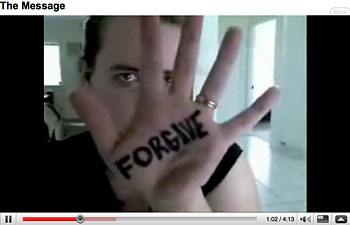The young men and women entering university today are digital natives who have grown up in a world of Microsoft, Google and Apple. They have lived through a time when the Internet went from being a highly specialized system used by scientists to a ubiquitous utility that defines how they engage with the world.
But while today’s students may blog and Twitter their way through class, many are unaware of how that same technology is fundamentally changing the way they live, play and learn.
This is the rationale for a new undergraduate foundation concentration at the University of British Columbia in New Media and Society, bringing together professors from Sociology, English and Journalism. It aims to equip students with the critical skills to engage in the emergent digital media landscape and understand what it means to be literate in an interconnected planet.
I am teaching the journalism component of the course. Over the course of two semesters, first-year students are introduced to the development and impact of new media in a challenging and enriching learning environment. It is part of UBC’s Co-ordinated Arts Program that offers several thematic streams for new students with broad interests in the social sciences and humanities.
The New Media stream came partly out of feedback from recruiting visits with high school students. Visiting UBC profs found that prospective students were interested in courses examining new media and digital communication.
After all, these young people live in a brave new digital world, keeping in touch via Facebook, watching videos on YouTube and laughing at the latest LOLcats. Yet many may not appreciate that something like LOLcats was simply not possible before the Internet or that anyone creating a funny cat snapshot is contributing to the phenomenon of user-generated content.
Defining new media

This is not a course designed to teach students to be the next Woodward and Bernstein. Rather, it is about providing students with the knowledge and critical appreciation of our evolving media-saturated world. Over the coming weeks, we’ll be looking at radical transformation taking place in journalism, the changing role of the journalist, the impact of participatory media and the rise of social media, as well as issues of privacy and ethics.
For the course’s first couple weeks, we’ve been setting the scene to analyze how the media is changing. For starters, we’ve been grappling with what exactly we mean by “new media.” Everyone knows what you mean when you say new media — it’s a generic term for digital communication made possible through the use of computer technology. But “new” is also a loaded term, as it has connotations of social progress through technology. In any case, at some stage all media was new. It is debatable whether what my generation calls “new media” is new to today’s students. To them, it is just media.
Similarly, the Internet is not an alien system to these students, it is just there. In the past, I have asked students to go offline for eight hours and journal their experience. To many, it is a revelation. To make the point in class, I played a clip from the “South Park” episode Over-Logging, where the citizens of this fine mountain town wake up to a world without the Internet. It is a reminder that there was a world before Google.
New platforms, new practices
To help the students make sense of what is happening in journalism, I draw from the work of historian Lisa Gitelman. She offers a model of media that works on two levels: It is a technology that allows communication, as well as a set of protocols that have developed around that technology.
This helps to separate our understanding of media as a delivery system from our understanding of media as a set of social and cultural practices. Clive Thompson writes about this process, discussing how the Net is changing video in the January issue of Wired magazine.
Thompson writes about a short video by YouTube user MadV of a scrawled message on his hand and the huge response that provoked, with others offering their own message to the world. Thompson’s point is that even after 100 years of moving pictures, people are finding new uses for video, thanks to the Internet — in this case as a forum for mass-distributed conversation.
As new platforms and devices emerge, how we use and relate to media undergoes a process of transformation and reinvention. Even though this is not a theory course, it is important for students to have a conceptual framework for analyzing the shifting sands of journalism today. By April, the students should leave with an awareness of the historical context of computer-based communication, an understanding of the impact of digital technologies and a critical appreciation for new media.
If journalism’s role is to help citizens make informed decisions, then it is important for tomorrow’s citizens to have the skills to be able to navigate the seas of digital information.
Alfred Hermida is an online news pioneer and journalism educator. He is an assistant professor at the Graduate School of Journalism, the University of British Columbia, where he leads the integrated journalism program. He was a founding news editor of the BBC News website. He blogs at Reportr.net.


Looks like a great structure for a digital journalism course. I really liked the way you try to develop “multimedia mindset” among the students. I see that very often colleges spend too much time on tools and completely ignore critical thinking and theoretical aspects in digital journalism courses. And I would argue that “multimedia mindset” and critical thinking are much more important in the new era of journalism than an ability to produce a slide show…
And your twitter adress is???
twitter.com/paloma
Really it can bring a significance
change in music and i believe this.